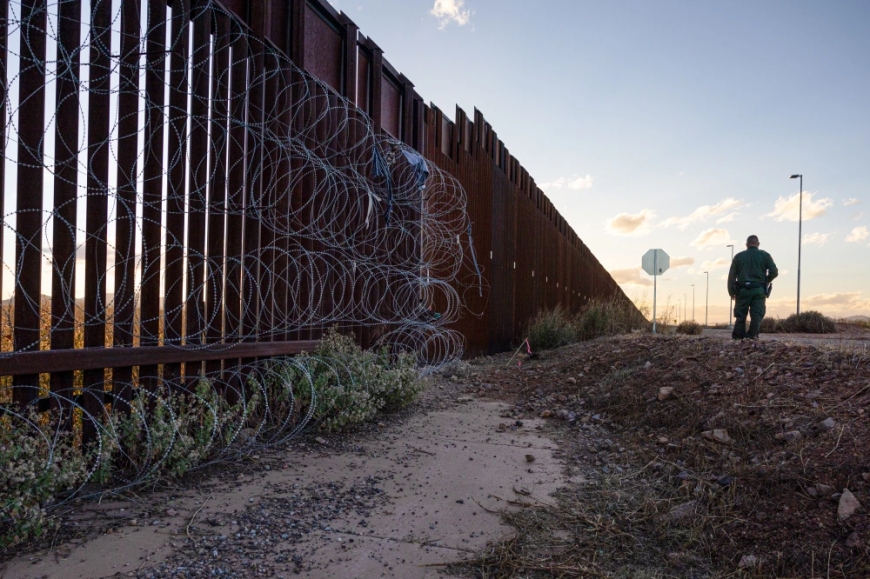The Subtle Complexity Underlying ICE's Non-Detained Criminal Immigrant Population

Immigration and Customs Enforcement (ICE) revealed in a shocking report recently sent to Congress that over 13,000 homicide-convicted aliens presently live outside of immigration custody in the United States. Part of ICE's "non-detained" docket, this stunning statistic highlights the complex and sometimes misinterpreted terrain of immigration enforcement in the nation and has spurred political discussion from all sides of the spectrum.
Collected as of July 2024, the data shows the difficulties ICE has controlling a non-detained population including some of the most severe criminals. ICE claims these people are not now in custody either because they are serving time for their crimes, ICE does not know where they live, or the agency does not give them top priority for detention. Many people have naturally become concerned about this situation since many of those found guilty of such heinous crimes question how they may remain unincarcerated and maybe free to go across American boundaries.
Historical Context: Immigration Enforcement Among Different Administrations
Although detractors of the present government, including former President Donald Trump, have used the statistics to attack what they claim to be lax immigration policy, the issue is significantly more complicated. ICE authorities have stressed that many of the 13,000 immigrants with homicide convictions did not all cross under the present government—many did so during past regimes, including Trump's own. Emphasizing that the data covers more than 40 years and includes people who might have entered the United States decades ago, a Department of Homeland Security (DHS) spokesman stressed
Looking at ICE's non-detained docket, one finds that this is not a novel problem. Over the years, the count of criminal immigrants on ICE's non-detained docket has actually gradually climbed. 368,000 criminal immigrants not in custody according to a 2016 DHS estimate That figure had climbed to nearly 405,000 by 2021 and is still rising; by mid-2024 it will be 435,719. This rise is a long-term difficulty experienced by several governments, not the outcome of any one border policy.
Coordination Problems and Sanctuary Cities
Sanctuary city laws, whereby local officials restrict cooperation with ICE, complicate matters even more. Some countries let immigrants who have been found guilty of crimes to be freed from their terms without contacting ICE, therefore leaving the agency to find and capture them thereafter. This issue highlights a more general systemic issue whereby local governments, state legislation, and immigration enforcement are sometimes at conflict.
Although some cities contend that establishing trust with immigrant populations depends on sanctuary rules, detractors claim these laws let dangerous people hide from deportation. ICE has responded by stepping up initiatives involving local law enforcement. In response to mounting public safety and immigration concerns, several jurisdictions have begun to rethink their sanctuary policies, stated acting ICE Director P.J. Lechleitner.
ICE's Resource Challenges
Though this topic is increasingly important, ICE's resources significantly restrict its capacity to solve it. Only a small portion of the about 7.5 million immigrants in the non-detained docket may be actually tracked and arrested. ICE has said that of this population, its first goal is to concentrate on those found guilty of major crimes including homicide; yet, even then, finding and arresting these people calls for a lot of personnel and time. Showing the intricacy of such operations, NBC News followed ICE officials in Maryland as they detained two immigrants convicted of violent crimes abroad earlier this year.
Just a tiny portion of the non-detained population—the 13,099 homicide-convicted immigrants account for Like one man detained in Maryland who was found guilty of murder in Colombia, many of them might have been convicted overseas. Others, ICE says, might not have had their criminal records found at the time they crossed the U.S. border, therefore casting more general doubts on the effectiveness of information exchange and background checks between nations.
Political Afterglow
As expected, this information has rapidly turned into weapon in the continuous political argument on immigration. Using the research to criticize present immigration laws, Trump seized on it during a recent campaign rally, asserting that Biden's policies directly led to the presence of "tough, vicious criminals" living freely in the United States. Actually, many of these immigrants came into the nation long before President Biden took office—some even during Trump's term.
Not only did the public find this information shocking, but apparently the White House also found it unexpected. Emphasizing that many of the custody rulings for these aliens were made decades ago, a DHS official pointed out that the data given to Republican Rep. Tony Gonzales of Texas had been misread. Although the government has not yet responded formally, the political ramifications of this study are probably going to linger as immigration will remain a major concern in the next presidential contest.
The Greater View
Unquestionably, the existence of more than 13,000 homicide-convicted immigrants living outside of custody in the United States is concerning. On closer inspection, though, the problem is firmly ingrained in a complicated interaction between ICE's limited resources, sanctuary city rules, and antiquated immigration laws. Although both political parties are eager to point fingers, fact is that federal, state, and local authorities must cooperate as well as have a sophisticated knowledge of how these people arrived and stayed in the nation to handle this situation.
This most recent discovery reminds us sharply that the argument over immigration cannot be limited to fleeting soundbites. Reform of a system that has failed to keep up with the reality of modern immigration, crime, and enforcement calls both a thorough, nonpartisan approach.













































